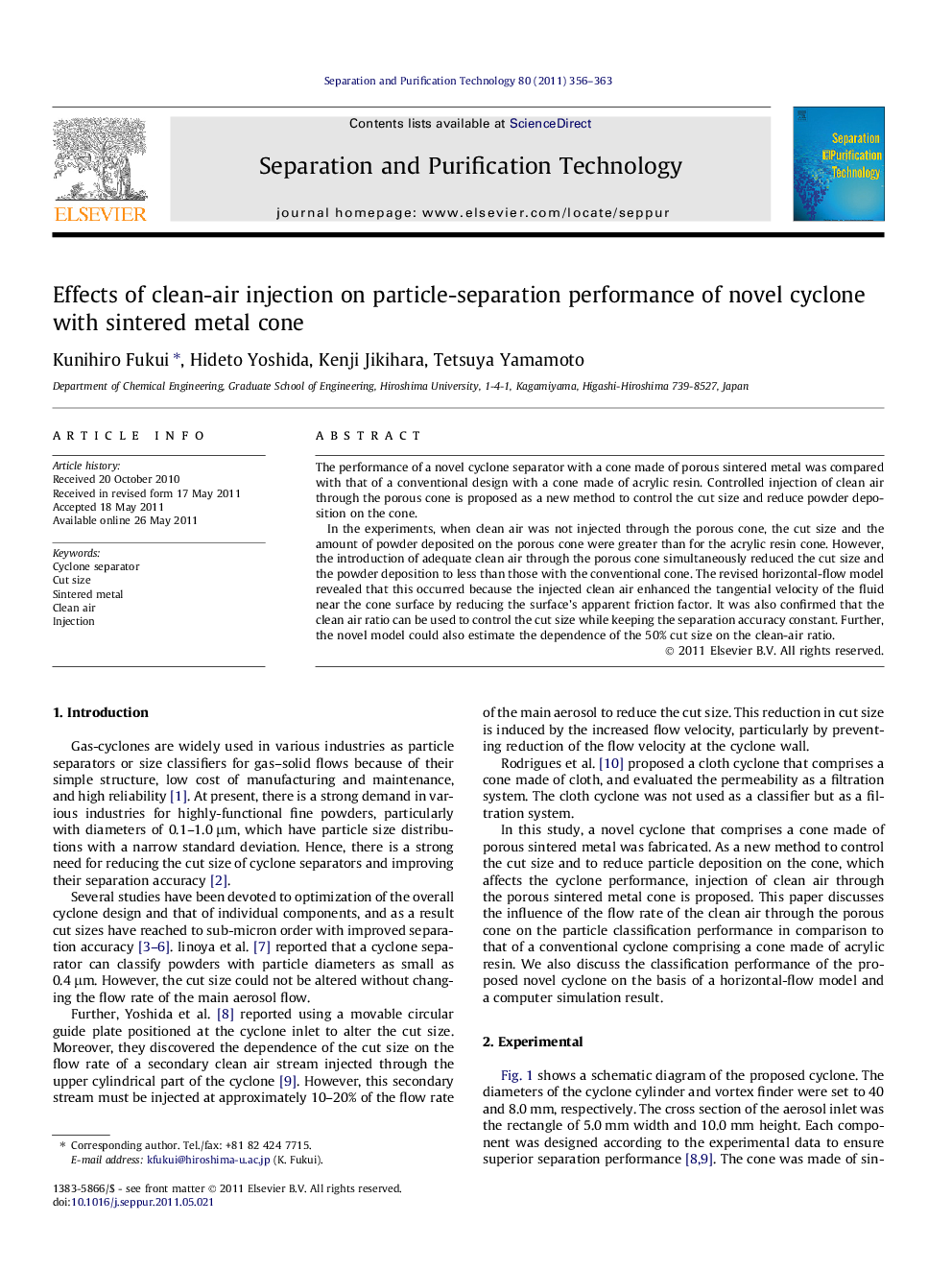| Article ID | Journal | Published Year | Pages | File Type |
|---|---|---|---|---|
| 642612 | Separation and Purification Technology | 2011 | 8 Pages |
The performance of a novel cyclone separator with a cone made of porous sintered metal was compared with that of a conventional design with a cone made of acrylic resin. Controlled injection of clean air through the porous cone is proposed as a new method to control the cut size and reduce powder deposition on the cone.In the experiments, when clean air was not injected through the porous cone, the cut size and the amount of powder deposited on the porous cone were greater than for the acrylic resin cone. However, the introduction of adequate clean air through the porous cone simultaneously reduced the cut size and the powder deposition to less than those with the conventional cone. The revised horizontal-flow model revealed that this occurred because the injected clean air enhanced the tangential velocity of the fluid near the cone surface by reducing the surface’s apparent friction factor. It was also confirmed that the clean air ratio can be used to control the cut size while keeping the separation accuracy constant. Further, the novel model could also estimate the dependence of the 50% cut size on the clean-air ratio.
Graphical abstractFigure optionsDownload full-size imageDownload as PowerPoint slideHighlights► A novel cyclone comprising a porous sintered-metal conical was proposed. ► Without clean air, cut size of the proposed cyclone were slightly larger than that of the conventional cyclone. ► Introduction of adequate clean air into the proposed cyclone reduced powder deposition and cut size simultaneously. ► The revised horizontal-flow model showed that the 50% cut had qualitative dependence on the clean-air ratio.
